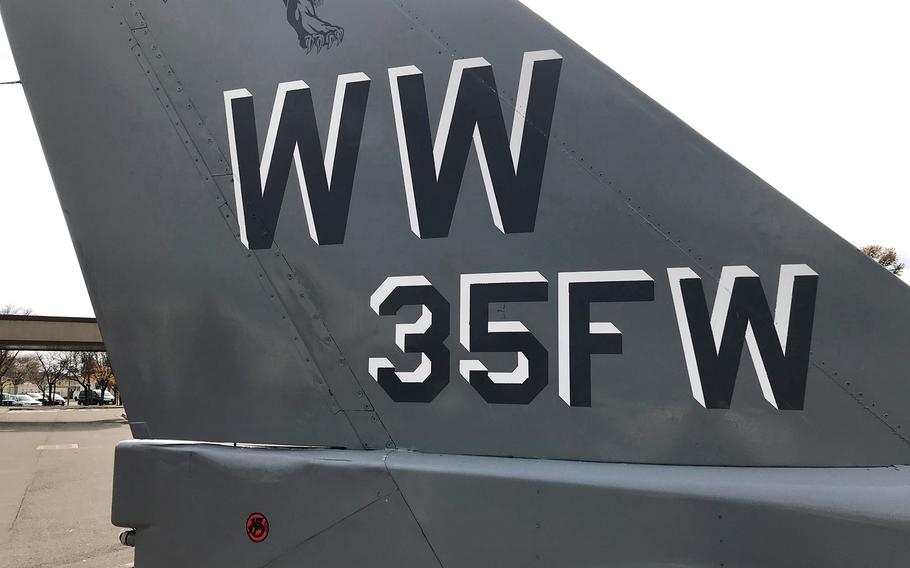Asia-Pacific
High levels of PFAS reported at reservoir near Air Force base in Japan
Stars and Stripes June 5, 2024

Misawa Air Base is home to the 35th Fighter Wing in northeastern Japan. (Aaron Kidd/Stars and Stripes)
Recent tests at a reservoir next to an air base in northern Japan found levels of toxic “forever chemicals” above U.S. and Japanese safety drinking standards, according to the local Japanese governments.
An April 22 water quality survey at the Itsukawametsutsumi reservoir near Misawa Air Base found 14 times more PFAS than Japan’s national provisional target value, said a news release posted Monday on Aomori prefecture’s website.
The Air Force’s 35th Fighter Wing and Japan Air Self-Defense Force operate from the base.
A synthetic chemical, PFAS, and its components, PFOS and PFOA, are found in firefighting foam, also known as aqueous film forming foam, used on some U.S. military bases.
The Defense Department has removed the foam from all its Navy and Marine Corps bases in Japan and from all Army bases on Honshu, the largest of the country’s four main islands, according to U.S. Forces Japan in June 2023.
It was also removed at Misawa. However, an advisory letter posted in September on the installation’s website said an on-base water tower briefly exceeded PFAS safety levels.
The April survey by Misawa city and Aomori prefecture sampled water from the reservoir east of the base, according to the news release. It found 720 nanograms per liter of PFAS, which is more than 14 times Japan’s provisional target value of 50 nanograms per liter.
Samples taken that day at four spots where the reservoir empties into the ocean showed 0.7 and 0.8 nanograms per liter of PFAS, the release said.
“Responses are being coordinated with other agencies to confirm the information,” said a statement emailed to Stars and Stripes on Tuesday by the 35th Fighter Wing’s public affairs office. The office, in a follow-up phone call, refused to attach a spokesperson’s name to the statement.
Aomori’s news release said the city and prefecture will conduct further surveys “to grasp the water quality situation,” with the next survey scheduled for August.
Misawa city officials believe its citizens have not been affected.
The reservoir’s water has not been used for drinking or farming in recent years, a spokesman for the city’s environmental sanitation division told Stars and Stripes by phone Tuesday.
He also said many people who fish there do not eat what they catch.
Some government officials in Japan may speak to the media only on condition of anonymity.
The reservoir is connected to another one on base, the city official said. The base notified the city in December that it had treated contaminated water and discharged it into its reservoir, the city spokesman said.
The PFAS source has not been determined, but the base is suspected because there are no other potential sources nearby, the spokesman said.
“We had requested the base through North Tohoku Defense Bureau to determine the cause,” he said. The bureau is the local arm of Japan’s Ministry of Defense.
The city had also detected high levels of PFAS in a reservoir west of the base, the city spokesman said. A water survey there in December found 84 nanograms per liter.
However, the level at Lake Ogawara, where that reservoir empties, showed less than 50 nanograms per liter.
In January 2022, water leaked through a cracked pipe that once held firefighting foam in a hardened aircraft shelter on base and flowed into the wastewater treatment system, the wing’s then-spokesman, Lt. Col. Cody Chiles, said in December 2022. High levels of PFOS detected in the treatment system had fallen significantly six months later.
The air base notified Japanese authorities of the spill, shut down the treatment plant and removed the contaminated wastewater, Chiles said.
The fire suppression systems that once held firefighting foam “were isolated and contained to prevent any future accidental discharge,” he said.